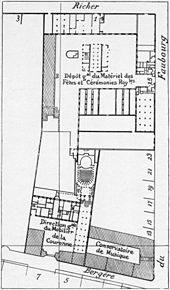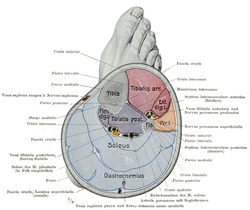...yet by no means the least of those for this fine year, 2013!
Many years ago, I used to perform 'The Last Post' every day while at school...those were the days.
Andrea Angel Bocelli, what a man. Blinded when about 12 years old, he has shown the world that you don't need all your God given talents to make a success
PERSISTENT STATE OF ONGOING RECOVERY this is the story of construction of a life that was and is beautiful. I am because I think I think because I can Life's Good Thank God for what I do have and not for what I do not!
For the Grace of God
Father, thank You for making me alive in Christ! I declare that Jesus is my Lord and Saviour, and because He died for me, I can live the abundant life here on earth. Help me stay focused on You this day & live with the enthusiasm that comes from knowing You in Jesus’ name, Amen.
Tuesday, December 31, 2013
Saturday, December 28, 2013
Let's jave a word...
What a bird, the Schweet Lesser Striped Swallow
"Everything will be all right in the end. So if it is not all right, it is not yet the end."
Some people think of that quote as belonging to Paulo Coelho. Others to John Lennon. A special few, however, know it as the oft-spoken adage of Sonny Patel, owner of a fictional hotel in Jaipur, India. As someone who believes The Best Exotic Marigold Hotel to be the best movie of 2012, the fact that I fall into the latter category should be no surprise. It should also be no surprise that many people choose not to believe that I'm serious about loving it as much as I do. Seeing and enjoying poorly reviewed movies is a hobby—or perhaps condition—of mine (I saw Safe Haven last weekend on my day off from work), so I don't have the best track record.
I'm aware that a movie about seven elderly Brits who move into an Indian hotel sounds like a red flag to many people, so I understand why you think I'm joking or perverse or wrong in liking The Best Exotic Marigold Hotel as much as I do. But I'm not. And it's my goal to make you believe me.
Friday, December 27, 2013
Erotic cosmologically twisted
"She was so wet that she could spray me with pussy juice."
Hoopoe / hoepoes???
Hoes, hoes, hoes, ou does...shh, ag nee man!
Hoes, hoes, hoes, ou does...shh, ag nee man!
Wednesday, December 25, 2013
Following on...
Pressing On and following on from yesterday...and Singing in the Rain with Gene Kelly
Conservatoire de Paris
From Wikipedia, the free encyclopedia
Jump to: navigation, search
In 1946 it was split in two, one part for acting, theatre and drama, known as the Conservatoire national supérieur d'art dramatique (CNSAD), and the other for music and dance, known as the Conservatoire national supérieur de musique et de danse de Paris (CNSMDP). Today the conservatories operate under the auspices of the Ministry of Culture and Communication.
History

Former Conservatoire building (until 1911) in the 9th arrondissement of Paris, which now houses the CNSAD (48.873074°N 2.347001°E)
École Royale de Chant
On 3 December 1783 Papillon de la Ferté, Intendant of the Menus-Plaisirs du Roi, proposed that Niccolò Piccinni should be appointed director of a future École Royale de Chant (literally, Royal School of Singing). The school was instituted by a decree of 3 January 1784 and opened on 1 April with the composer François-Joseph Gossec as the provisional director. Piccinni refused the directorship, but did join the faculty as a professor of singing. The new school was located in buildings adjacent to the Hôtel des Menus-Plaisirs at the junction of the rue Bergère and the rue du Faubourg Poissonnière.[1][2] In June a class in dramatic declamation was added, and the name was modified to École Royale de Chant et de Déclamation.[3]Institut National de Musique
Founding of the Conservatoire
On 3 August 1795, the government combined the Ecole Royale with the Institut National de Musique, creating the Conservatoire de Musique under the direction of Sarrette. The combined organization remained in the facilities on the rue Bergère. The first 351 pupils commenced their studies in October 1796.[2][4]By 1800 the staff of the Conservatory included some of the most important names in music in Paris, including, besides Gossec, the composers Luigi Cherubini, Jean-François Le Sueur, Étienne Méhul, and Pierre-Alexandre Monsigny, as well as the violinists Pierre Baillot, Rodolphe Kreutzer, and Pierre Rode.[2]
Salle des Concerts du Conservatoire
A concert hall, designed by the architect François-Jacques Delannoy,[5] was inaugurated on 7 July 1811.[6] The hall, which still exists today, was in the shape of a U (with the orchestra at the straight end). It held an audience of 1055.[7] The acoustics were generally regarded as superb. The French composer and conductor Antoine Elwart(fr) described it as the Stradivarius of concert halls.[8]In 1828 François Habeneck, a professor of violin and head of the Conservatory's orchestra, founded the Société des Concerts du Conservatoire (forerunner of the Orchestre de Paris). The Society held concerts in the hall almost continuously until 1945, when it moved to the Théâtre des Champs-Élysées.[9] The French composer Hector Berlioz premiered his Symphonie fantastique in the conservatory's hall on 5 December 1830 with an orchestra of more than a hundred players.[6]
Library
The original library was created by Sarrette in 1801.[10] After the construction of the concert hall, the library moved to a large room above the entrance vestibule.[11] In the 1830s Berlioz became a part-time curator in the Conservatory Library and was the librarian from 1852 until his death in 1869, but never held a teaching position. He was succeeded as librarian by Félicien David.[2]Bourbon Restoration
Sarrette was dismissed on 28 December 1814, after the restoration of the monarchy, but was reinstated on 26 May 1815, after Napoleon's return to power (during the "Hundred Days"). However, after Napoleon's fall, Sarrette was finally compelled to retire on 17 November.[10] The government of the monarchy kept the school closed for a period, but reopened it as the École Royale de Musique with François-Louis Perne as the director in April 1816.[2] In 1819 François Benoist was appointed professor of organ.[7]Probably the most well known director in the 19th century was Luigi Cherubini, who took over on 1 April 1822 and remained in control until 8 February 1842. Cherubini maintained high standards and his staff included teachers such as François-Joseph Fétis, Habeneck, Fromental Halévy, Le Sueur, Ferdinando Paer, and Anton Reicha.[2]
Cherubini was succeeded by Daniel-François-Esprit Auber in 1842. Under Auber composition teachers included Adolphe Adam, Halévy, and Ambroise Thomas; piano teachers, Louise Farrenc, Henri Herz, and Antoine François Marmontel; violin teachers, Jean-Delphin Alard and Charles Dancla; and cello teachers, Pierre Chevillard and Auguste Franchomme.[2]
In 1852, Camille Urso, who studied with Lambert Massart, became the first female student to win a prize on violin.[12]
Instrument museum
The Conservatory Instrument Museum, founded in 1861, was formed from the instrument collection of Louis Clapisson(fr).[2][13] The French music historian Gustave Chouquet became the curator of the museum in 1871 and did much to expand and upgrade the collection.[13]Franco-Prussian War and the Third Republic
In the Franco-Prussian War, during the siege of Paris (September 1870 – January 1871), the Conservatory was used as a hospital. On 13 May 1871, the day after Auber's death, the leaders of the Paris Commune appointed one Salvador Daniel as the director, however Daniel was shot and killed ten days later by the troops of Adolphe Thiers. He was replaced by Ambroise Thomas, who remained in the post until 1896. Thomas's rather conservative directorship was vigorously criticized by many of the students, notably Claude Debussy.[2]Théodore Dubois succeeded Thomas after the latter's death in 1896. Professors included Charles-Marie Widor, Gabriel Fauré, and Charles Ferdinand Lenepveu for composition, Alexandre Guilmant for organ, Paul Taffanel for flute, and Louis Diémer for piano.[2]
Gabriel Fauré
Fauré appointed forward-thinking representatives (such as Debussy, Paul Dukas, and André Messager) to the governing council, loosened restrictions on repertoire, and added conducting and music history to the courses of study. Widor's composition students during this period included Darius Milhaud, Arthur Honegger, and Germaine Tailleferre. Other students included Lili Boulanger and Nadia Boulanger. New to the staff were Alfred Cortot for piano and Eugène Gigout for organ.[2]
The modern era
The Conservatory moved to facilities at 14 rue de Madrid in 1911.[2]Henri Rabaud succeeded Fauré in 1920 and served until 1941. Notable students were Olivier Messiaen, Jean Langlais, and Jehan Alain. Staff included Dukas and Jean Roger-Ducasse for composition, Marcel Dupré for organ, Marcel Moyse for flute, and Claire Croiza for singing.[2]
Claude Delvincourt was director from 1941 until his tragic death in an auto accident in 1954. Delvincourt was a progressive administrator, adding classes in harpsichord, saxophone, percussion, and the Ondes Martenot. Staff included Milhaud for composition and Messiaen for analysis and aesthetics. In 1946, the dramatic arts were transferred to a separate institution (CNSAD). Delvincourt was succeeded by Dupré in 1954, Raymond Loucheur in 1956, Raymond Gallois-Montbrunn in 1962, Marc Bleuse in 1984, and Alain Louvier in 1986. Plans to move the Conservatory of Music and Dance to more modern facilities in La Villette were initiated under Bleuse and completed under Louvier. It opened as part of the Cité de la Musique in September 1990.[2]
Currently the conservatories train more than 1,200 students in structured programs, with 350 professors in nine departments.
CNSAD
The Conservatoire National Supérieur d'art Dramatique (National Superior Conservatory of the Dramatic Arts) is the conservatory for acting, drama, and theatre, known by its acronym CNSAD. It is located in the original historic building of the Conservatoire de Paris on the rue du Conservatoire at rue Sainte-Cécile in the 9th arrondissement of Paris. Free public performances by students at the CNSAD are given frequently in the Conservatoire's theatre.CNSMDP
The Conservatoire National Supérieur de Musique et de Danse de Paris (National Superior Conservatory of Paris for Music and Dance) is a separate conservatory for music and dance. The French government built the impressive new campus with strikingly modern architecture in the 19th arrondissement of Paris. Design by Christian de Portzamparc.The organ on site was built in 1991 by a firm from Austria.
Faculty
- Students
- Former teachers
Tuesday, December 24, 2013
Conservative?
I Think Not
Definition of conservatoire in English
conservatoire
Pronunciation: /kənˈsəːvətwɑː/
noun
British- a college for the study
 of classical music or other arts, typically in the continental European tradition: she studies piano and violin at the Paris Conservatoire
of classical music or other arts, typically in the continental European tradition: she studies piano and violin at the Paris Conservatoire
Origin:
late 18th century : French
: French , from Italian conservatorio, from late Latin conservatorium, from conservare 'to preserve' (see conserve). Compare with conservatory
, from Italian conservatorio, from late Latin conservatorium, from conservare 'to preserve' (see conserve). Compare with conservatorySaturday, December 21, 2013
What a day!
Today is the anniversary of my late grandmother, Thurle Olive Hughes, birthday and therefore a very significant day in my life.
Thursday, December 19, 2013
Fibular is foot related and Tibular is top!
Wednesday, December 18, 2013
That is the whole point
Lest I forget what I am up to!
Words are so wordyyyyyyy
que sera sera - what will be, will be!
Indeed, spoke to Paul an will see Paul & Yvonne next year - told them of our engagement!
Words are so wordyyyyyyy
que sera sera - what will be, will be!
Indeed, spoke to Paul an will see Paul & Yvonne next year - told them of our engagement!
Tuesday, December 17, 2013
Monday, December 16, 2013
apropos
ˌaprəˈpəʊ,ˈaprəpəʊ/
preposition
preposition: apropos
- 1.with reference to; concerning."she remarked apropos of the initiative, ‘It's not going to stop the abuse’"
synonyms: with reference to, with regard to, with respect to, regarding, concerning, respecting, on the subject of, in the matter of, touching on, dealing with, connected with, in connection with, about, re; More "value judgements apropos of particular works of art"
adjective
adjective: apropos
- 1.very appropriate to a particular situation."the song feels apropos to a midnight jaunt"
synonyms: appropriate, pertinent, relevant, apposite, apt, applicable, suitable, germane, material, becoming, befitting, significant, to the point/purpose; More "the word ‘conglomerate’ was decidedly apropos"antonyms: inappropriate
Origin
Wednesday, December 11, 2013
It's Him
I dunno what to do ...
Jesus is my man and in God we trust!
The 51st State
From Wikipedia, the free encyclopedia
Jump to: navigation, search
This article is about the film. For the hypothetical US state, see 51st state. For the song, see 51st State (song).
| The 51st State | |
|---|---|

Theatrical release poster
|
|
| Directed by | Ronny Yu |
| Produced by | David Pupkewitz Malcolm Kohll Andras Hamori Mark Aldridge |
| Written by | Stel Pavlou |
| Starring | Samuel L. Jackson Robert Carlyle Emily Mortimer Meat Loaf Ricky Tomlinson |
| Cinematography | Poon Hang-Sang |
| Distributed by | Momentum Pictures (UK) Screen Gems (US) Alliance Atlantis (Canada) Paramount Pictures (Australia) |
| Release dates | 7 December 2001 |
| Running time | 92 minutes |
| Country | Canada United Kingdom[1] |
| Language | English |
| Budget | $27,000,000[2][3] |
| Box office | $14,439,698[3] |
Premiering in the United Kingdom on 7 December 2001, the film grossed £913,239 in its opening week and made worldwide profits of $14.4 million. It received mixed reviews from critics. The 51st State was ranked 171st on the list of highest grossing films of 2002.
Tuesday, December 10, 2013
Alien's an others, inter alia, me.
alienist
= A psychiatrist, especially one who has been accepted
by a court to assess mental competence of those
appearing in a court case.
I'm a legal alien...
Monday, December 9, 2013
Hoping this will reflect the 8th
But it does not...
But it does not...
Curator bonis
From Wikipedia, the free encyclopedia
Jump to: navigation, search
A Curator bonis (Legal guardian)
is a person appointed by a court to manage the finances, property, or
estate of another person unable to do so because of mental or physical
incapacity.
Friday, December 6, 2013
Thursday, December 5, 2013
No Problem!
There are a few main ways to say "you're welcome" in French:
 use is mostly one of greeting or of appreciation, like when you say, for example, that relief is welcomed.
use is mostly one of greeting or of appreciation, like when you say, for example, that relief is welcomed.
- Je vous en prie / Je t'en prie
- Pas de problème
- De rien
- Bienvenue
 use is mostly one of greeting or of appreciation, like when you say, for example, that relief is welcomed.
use is mostly one of greeting or of appreciation, like when you say, for example, that relief is welcomed.Wednesday, December 4, 2013
Tuesday, December 3, 2013
Diamonds and Pearls...
...are sometimes a girls best friend; then again more blood has been spilled for diamonds than is worth the sense of rush you get when you have one...tut tut tut.
Monday, December 2, 2013
Saturday, November 30, 2013
Thursday, November 28, 2013
Tuesday, November 26, 2013
I am in need of!
An anorak or parka is a type of coat with a hood, often lined with fur or fake fur. The hood protects the face from freezing temperatures and wind. The Caribou Inuit invented this kind of garment, originally made from caribou or seal skin, for hunting and kayaking in the frigid Arctic. Some Inuit anoraks require regularly coating with fish oil to retain their water resistance.
The words anorak and parka have possibly been used interchangeably, but they are somewhat different garments. Strictly speaking, an anorak is a waterproof, hooded, pull-over jacket without a front opening, and sometimes drawstrings at the waist and cuffs, and a parka is a knee-length cold-weather coat; typically stuffed with down or very warm synthetic fiber, and with a fur-lined hood
The words anorak and parka have possibly been used interchangeably, but they are somewhat different garments. Strictly speaking, an anorak is a waterproof, hooded, pull-over jacket without a front opening, and sometimes drawstrings at the waist and cuffs, and a parka is a knee-length cold-weather coat; typically stuffed with down or very warm synthetic fiber, and with a fur-lined hood
Monday, November 25, 2013
Sunday, November 24, 2013
Movember is nearing the end...
|
|
||||||
verb
| ||||||
Saturday, November 23, 2013
DULCE ET DECORUM EST(1)
Bent double, like old beggars under sacks,
Knock-kneed, coughing like hags, we cursed through sludge,
Till on the haunting flares(2) we turned our backs
And towards our distant rest(3) began to trudge.
Men marched asleep. Many had lost their boots
But limped on, blood-shod. All went lame; all blind;
Drunk with fatigue; deaf even to the hoots(4)
Of tired, outstripped(5) Five-Nines(6) that dropped behind.
Gas!(7) Gas! Quick, boys! – An ecstasy of fumbling,
Fitting the clumsy helmets(8) just in time;
But someone still was yelling out and stumbling,
And flound'ring like a man in fire or lime(9) . . .
Dim, through the misty panes(10) and thick green light,
As under a green sea, I saw him drowning.
In all my dreams, before my helpless sight,
He plunges at me, guttering,(11) choking, drowning.
If in some smothering dreams you too could pace
Behind the wagon that we flung him in,
And watch the white eyes writhing in his face ,
,
His hanging face, like a devil's sick of sin;
If you could hear, at every jolt, the blood
Come gargling from the froth-corrupted lungs,
Obscene as cancer, bitter as the cud(12)
Of vile, incurable sores on innocent tongues,
My friend , you would not tell with such high zest(13)
, you would not tell with such high zest(13)
To children ardent(14) for some desperate glory,
glory,
The old Lie; Dulce et Decorum est
Pro patria mori.(15)
Knock-kneed, coughing like hags, we cursed through sludge,
Till on the haunting flares(2) we turned our backs
And towards our distant rest(3) began to trudge.
Men marched asleep. Many had lost their boots
But limped on, blood-shod. All went lame; all blind;
Drunk with fatigue; deaf even to the hoots(4)
Of tired, outstripped(5) Five-Nines(6) that dropped behind.
Gas!(7) Gas! Quick, boys! – An ecstasy of fumbling,
Fitting the clumsy helmets(8) just in time;
But someone still was yelling out and stumbling,
And flound'ring like a man in fire or lime(9) . . .
Dim, through the misty panes(10) and thick green light,
As under a green sea, I saw him drowning.
In all my dreams, before my helpless sight,
He plunges at me, guttering,(11) choking, drowning.
If in some smothering dreams you too could pace
Behind the wagon that we flung him in,
And watch the white eyes writhing in his face
 ,
, His hanging face, like a devil's sick of sin;
If you could hear, at every jolt, the blood
Come gargling from the froth-corrupted lungs,
Obscene as cancer, bitter as the cud(12)
Of vile, incurable sores on innocent tongues,
My friend
 , you would not tell with such high zest(13)
, you would not tell with such high zest(13) To children ardent(14) for some desperate
 glory,
glory, The old Lie; Dulce et Decorum est
Pro patria mori.(15)
Wilfred Owen
8 October 1917 - March, 1918
8 October 1917 - March, 1918
Roling on the River
1ju·li·enne
noun \ˌjü-lē-ˈen, ˌzhü-\Definition of JULIENNE
1
: a consommé containing julienned vegetables

2
a : food (as meat or vegetables) that has been julienned
b : a preparation or garnish of julienned food julienne
— julienne adjective
Why do we get all te hectic stuff??
29/10/2013Do we do too much? Try too hard??
I ask you, Run Forest, Run!
Is that a comfortable cat? Or a dog with a ruff life?
Who is hard done by?? and where the heck did that bear go???
I ask you, Run Forest, Run!
Is that a comfortable cat? Or a dog with a ruff life?
Who is hard done by?? and where the heck did that bear go???
|
||||||
noun
| ||||||
Dulce, dulce...
Arlington Memorial Amphitheater -- this is from about four / five days ago
A humorous elaboration of the original line was used as a toast in the 19th century: "Dulce et decorum est pro patria mori, sed dulcius pro patria vivere, et dulcissimum pro patria bibere. Ergo, bibamus pro salute patriae." In English this is rendered as: "It is sweet and dignified to die for the homeland, but it is sweeter to live for the homeland, and the sweetest to drink for it. Therefore, let us drink to the health of the homeland."
pic
Sweet and fitting
Dulce et decorum est pro patria mori
"It is sweet and fitting to die for your country."A humorous elaboration of the original line was used as a toast in the 19th century: "Dulce et decorum est pro patria mori, sed dulcius pro patria vivere, et dulcissimum pro patria bibere. Ergo, bibamus pro salute patriae." In English this is rendered as: "It is sweet and dignified to die for the homeland, but it is sweeter to live for the homeland, and the sweetest to drink for it. Therefore, let us drink to the health of the homeland."
pic
Sweet and fitting
Big words mean...
...whateva.
Antidisestablishmentarianism, you may ask???
Merriam-Webster
Clearly, whatever she was, she was not Antidisestablishmentarianism.
"Ask not what your country can do for you; ask what you can do for your country." He asked the nations of the world to join together to fight what he called the "common enemies of man: tyranny, poverty, disease, and war itself."[49]
Now for some interesting news!
Siats – full name, Siats meekerorum – was about 30 feet long. It weighed about 4 tons. And that’s just the size of a juvenile Siats; the hind limb, pelvis, and backbone that the paleontologists found, in Utah’s Cedar Mountain Formation in 2008, is from a not yet full-grown dinosaur. It’s possible that, at adult-size, Siats is the second largest carnivorous dinosaur ever known to roam North America, says Dr. Zanno. The largest is T. rex, which weighed twice as much as Siats and appeared not until 30 million or so years later.
Antidisestablishmentarianism, you may ask???
Merriam-Webster
Clearly, whatever she was, she was not Antidisestablishmentarianism.
"Ask not what your country can do for you; ask what you can do for your country." He asked the nations of the world to join together to fight what he called the "common enemies of man: tyranny, poverty, disease, and war itself."[49]
Now for some interesting news!
Siats – full name, Siats meekerorum – was about 30 feet long. It weighed about 4 tons. And that’s just the size of a juvenile Siats; the hind limb, pelvis, and backbone that the paleontologists found, in Utah’s Cedar Mountain Formation in 2008, is from a not yet full-grown dinosaur. It’s possible that, at adult-size, Siats is the second largest carnivorous dinosaur ever known to roam North America, says Dr. Zanno. The largest is T. rex, which weighed twice as much as Siats and appeared not until 30 million or so years later.
Thursday, November 21, 2013
Monday, November 18, 2013
Sunday, November 17, 2013
Saturday, November 16, 2013
Subscribe to:
Posts (Atom)

 Are not theses Swallows Great?
Are not theses Swallows Great?
 jkj
jkj























